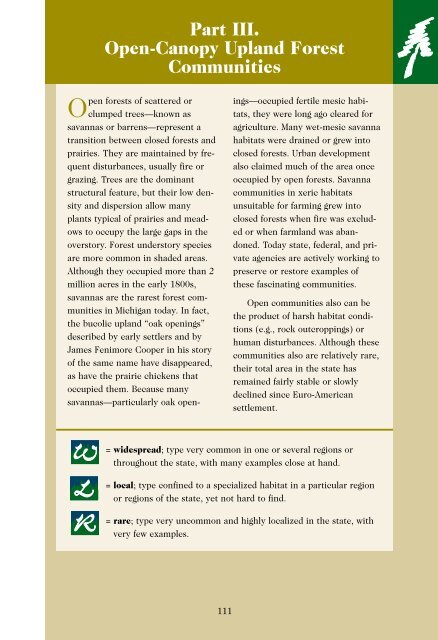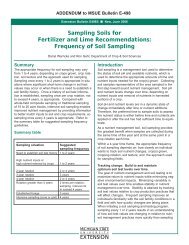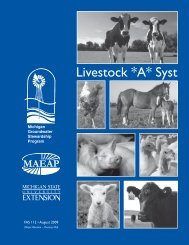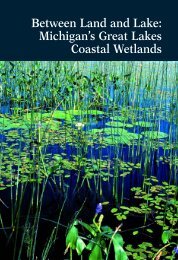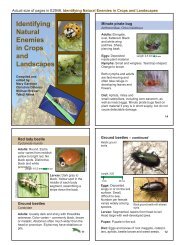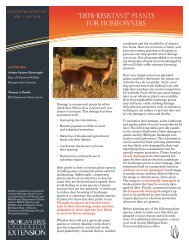Michigan Forest Communities - Michigan Association of ...
Michigan Forest Communities - Michigan Association of ...
Michigan Forest Communities - Michigan Association of ...
You also want an ePaper? Increase the reach of your titles
YUMPU automatically turns print PDFs into web optimized ePapers that Google loves.
Part III.<br />
Open-Canopy Upland <strong>Forest</strong><br />
<strong>Communities</strong><br />
Open forests <strong>of</strong> scattered or<br />
clumped trees—known as<br />
savannas or barrens—represent a<br />
transition between closed forests and<br />
prairies. They are maintained by frequent<br />
disturbances, usually fire or<br />
grazing. Trees are the dominant<br />
structural feature, but their low density<br />
and dispersion allow many<br />
plants typical <strong>of</strong> prairies and meadows<br />
to occupy the large gaps in the<br />
overstory. <strong>Forest</strong> understory species<br />
are more common in shaded areas.<br />
Although they occupied more than 2<br />
million acres in the early 1800s,<br />
savannas are the rarest forest communities<br />
in <strong>Michigan</strong> today. In fact,<br />
the bucolic upland “oak openings”<br />
described by early settlers and by<br />
James Fenimore Cooper in his story<br />
<strong>of</strong> the same name have disappeared,<br />
as have the prairie chickens that<br />
occupied them. Because many<br />
savannas—particularly oak openings—occupied<br />
fertile mesic habitats,<br />
they were long ago cleared for<br />
agriculture. Many wet-mesic savanna<br />
habitats were drained or grew into<br />
closed forests. Urban development<br />
also claimed much <strong>of</strong> the area once<br />
occupied by open forests. Savanna<br />
communities in xeric habitats<br />
unsuitable for farming grew into<br />
closed forests when fire was excluded<br />
or when farmland was abandoned.<br />
Today state, federal, and private<br />
agencies are actively working to<br />
preserve or restore examples <strong>of</strong><br />
these fascinating communities.<br />
Open communities also can be<br />
the product <strong>of</strong> harsh habitat conditions<br />
(e.g., rock outcroppings) or<br />
human disturbances. Although these<br />
communities also are relatively rare,<br />
their total area in the state has<br />
remained fairly stable or slowly<br />
declined since Euro-American<br />
settlement.<br />
W<br />
L<br />
R<br />
= widespread; type very common in one or several regions or<br />
throughout the state, with many examples close at hand.<br />
= local; type confined to a specialized habitat in a particular region<br />
or regions <strong>of</strong> the state, yet not hard to find.<br />
= rare; type very uncommon and highly localized in the state, with<br />
very few examples.<br />
111


